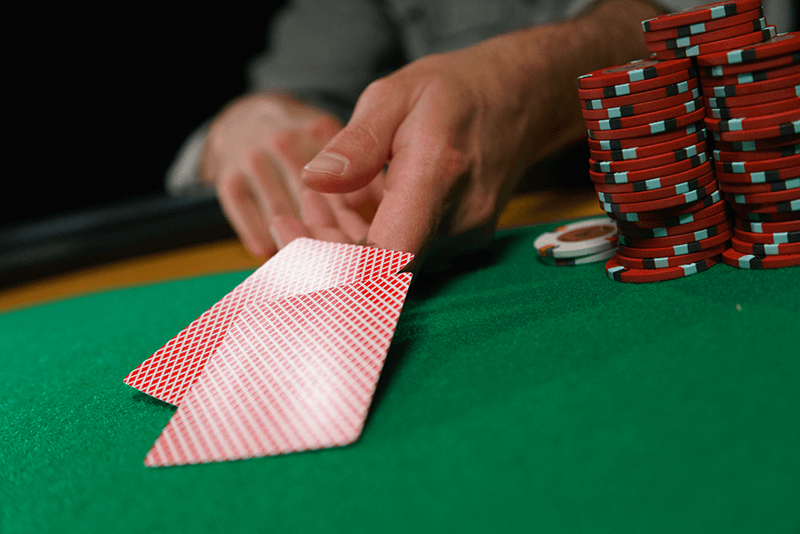Technically, you don’t need anything to 3-bet with any two cards pre-flop. In fact, some of you nittier players might be better off just 3-betting blind as a gamble, observing what happens, and remarking, “Hey, that wasn’t so bad!”
But if you want to inject a little more strategy into your pre-flop 3-bets, we can suggest a few pieces of information you can use to find profitable spots to let loose a re-raise with a wide range.
There is a lot of information you can pick up on that will scream, “3-bet this now!” In this example, we’re going to look at three key nuggets:
- Our table image
- Opponent betting frequencies
- Opponent bet sizing
This hand example is taken from the PRO video Fighting for Pots at $1/$2 by James “SplitSuit Sweeney”. We’ve excerpted a clip so you can watch the hand play out, and hear straight from the coach why these three pieces of information are critical in influencing our decision to 3-bet pre-flop with almost any two cards:
Exploit Your Table Image
Players at $1/$2 are often coming from the tighter end of the spectrum. The player in this example certainly was. It’s a mistake to just sit on that tight table image and not do anything with it. And in poker, if players expect you to do one thing, often times you should do the opposite. If the whole table is respecting your pre-flop raises as QQ+ and AK, you can then start raising Ax suited and suited connector type hands until that respect goes away. And there is often so little 3-betting pre-flop at $1/$2, you’ll get even more respect for representing a premium hand. You get the added bonus of knowing your opponent is likely holding a strong hand if they do decide to call your 3-bet.
When you exploit your table image, remember that it changes. In the example above, it’s easy to imagine tighter player starting to call your open-raises and 3-bets if they start to come out at an unreasonably high frequency. And that’s when you exploit your table image yet again, and tighten up to snap them off with a premium hand that they think you’re just fooling around with.
Exploit Opponent Betting Frequencies
Your opponents at $1/$2 and other low-stakes games are not often “balancing their range”. They’re betting and raising with good to great hands. Conversely, they overfold to aggression, because they tend not to be “sticky” and will not call multiple barrels unless they have the best of it.
You can and must exploit these frequencies by open-raising and 3-betting more pre-flop. Otherwise you are leaving money on the table. These low stakes games are full of players that just want to see a flop and make a hand. If you make it too expensive for them to see a flop with a marginal hand, they will fold. If they don’t hit the flop, they will usually fold to your c-bet. If they do call your c-bet, they will often fold to the turn. Nothing is universal in poker, and there are certainly players at $1/$2 who are sophisticated enough to understand all of this. But these types of unbalanced frequencies are quite common if you stop and take a close look at how your opponents are playing.
Exploit Opponent Bet Sizing
Low-stakes players will often telegraph the strength of their hand through their bet sizing. While more sophisticated players know to keep bet sizes consistent (or at least unpredictable) to disguise hand strength, less studied players often follow the common-sense idea, “The better the hand, the bigger the bet.”
Of course, common sense does not apply here. When someone in a $1/$2 game raises to $15 pre-flop and shows down aces, then raises to $8 on a following hand, their smaller raise probably indicates a weaker hand. KQ perhaps? AJ? Pocket nines? These are classic, “I’m strong, but not super-strong” hands that unstudied players feel uncomfortable committing large amounts pre-flop to.
More than anything in this example, this weaker bet screams, “3-bet me!”
You are going to have to make a sizable bet, but based on the information we have, we know that we are likely to get folds if we 3-bet. At worst, we’re probably playing a 3-bet pot in position vs. someone with a good but not great hand. If those left to act are not usually getting out of line and blowing up our plan, the time is now to execute project 3-bet light.

Integrating this Move into Your Game
Finally, a piece of advice for actually integrating this play into your own game: Make a commitment to yourself right now to 3-bet light once in your next session. Because the situation we described is so common at low stakes, you should have no trouble finding a spot where:
- Your table image is tight
- You are in late position
- The raiser is generally tight
- The raiser has demonstrated a bet sizing tell, in that their raise size indicates good-but-not-great hand strength
When you see this spot and look down at Ax suited, a suited connector, or even a suited gapper or K8-type hand, put in a healthy 3-bet. If the raise is $8 and you’d normally raise to $30 with AA, raise to $35 with 89s, or whatever light hand you wake up with. That extra bet sizing oomph will go a long way to selling the premium hand.
The underlying reason why this move is profitable is because we know what’s going to happen. Most of the time, everyone folds, and we pick up a pot with a hand we’d otherwise not have played. But when we do see a flop, it’s usually versus a single opponent we have position on, and we know something about the strength of their hand. We are still in a superior position to take this down post-flop with any two cards.
In those rare cases you get 4-bet, don’t despair. You just ran into the top of their range. It’s going to happen sometimes, you can’t let the results give you a false sense of failure if 7 out of 8 times your 3-bet is going to get through.
In the other rare cases where normally tight players decide to call ahead or behind you, then you can evaluate flop with the understanding that the table still probably respects you as holding the top of your range. You can c-bet dependent on flop, betting scarier boards that are unlikely to hit the good-but-not-great hands your opponents are likely to hold. And when the flop comes KQT, you can slow down and check, knowing that like AK, AQ, AJ, AT, KQ, QJ, KJ, JJ, TT and so on are all squarely in the ranges of your opponents.
We wish you luck on your 3-bet light challenge, let us know how it goes in the forum.

The other way you can use the 3-bet bluff and exploit it for your good hands is to limp or min-raise with your premiums, telling the table that you have a minimal hand. This will invite action and give you the possibility of a big hand (always depending on the cards that hit the table, of course). If the table sees you bluffing with 3-bets and min-betting with a premium your table image will become unpredictable and your opportunity for getting action and scooping big will improve significantly.
If you are on a table where players are thinking on that level, for sure. Just make sure not to “waste” such a strategy vs a table of level-1 thinkers =)
Im sure this must be in the realm of fools logic. Getting less in with your premiums AND giving opponents good odds to crush you with their 56s. Logically it would be better to raise more hands as premiums
Are these games you play at generally so tight? In the Netherlands, if you make a 3bet you often get cold-called behind you and the initial raiser will more frequently call than fold, regardless of his position…
Some games yes, others no. If you are playing in those kind of games, you might enjoy listening to this podcast episode: https://redchippoker.com/tips-for-beating-easy-poker-games-podcast/